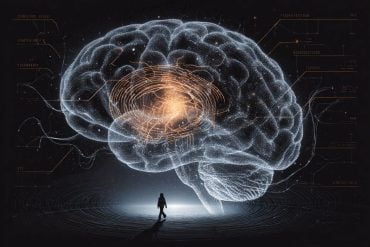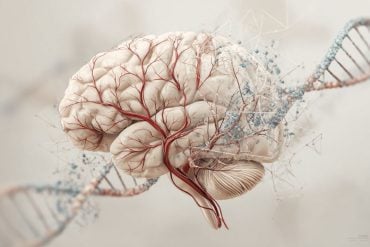Summary: A new machine learning model, AutMedAI, can predict autism in children under two with nearly 80% accuracy, offering a promising tool for early detection and intervention.
The model analyzes 28 parameters available before 24 months, such as age of first smile and eating difficulties, to identify children likely to have autism. Early diagnosis is crucial for optimal development, and further validation of the model is underway.
Key facts
- AutMedAI identifies 80% of children with autism from basic early-life data.
- Parameters include age of first smile and early speech milestones.
- Early diagnosis can improve life quality through timely interventions.
Source: Karolinska Institute
new machine learning model can predict autism in young children from relatively limited information. This is shown in a new study from Karolinska Institutet published in JAMA Network Open. The model can facilitate early detection of autism, which is important to provide the right support.
“With an accuracy of almost 80 percent for children under the age of two, we hope that this will be a valuable tool for healthcare,” says Kristiina Tammimies, Associate Professor at KIND, the Department of Women’s and Children’s Health, Karolinska Institutet and last author of the study.
The research team used a large US database (SPARK) with information on approximately 30,000 individuals with and without autism spectrum disorders.

By analyzing a combination of 28 different parameters, the researchers developed four distinct machine-learning models to identify patterns in the data. The parameters selected were information about children that can be obtained without extensive assessments and medical tests before 24 months of age. The best-performing model was named ‘AutMedAI’.
Among about 12,000 individuals, the AutMedAI model was able to identify about 80% of children with autism. In specific combinations with other parameters, age of first smile, first short sentence and the presence of eating difficulties were strong predictors of autism.
“The results of the study are significant because they show that it is possible to identify individuals who are likely to have autism from relatively limited and readily available information,” says study first author Shyam Rajagopalan, an affiliated researcher at the same department at Karolinska Institutet and currently assistant professor at the Institute of Bioinfomatics and Applied Technology,India.
Early diagnosis is critical, according to the researchers, to implement effective interventions that can help children with autism develop optimally.
“This can drastically change the conditions for early diagnosis and interventions, and ultimately improve the quality of life for many individuals and their families,” says Shyam Rajagopalan.
In the study, the AI model showed good results in identifying children with more extensive difficulties in social communication and cognitive ability and having more general developmental delays.
The research team is now planning further improvements and validation of the model in clinical settings. Work is also underway to include genetic information in the model, which may lead to even more specific and accurate predictions.
“To ensure that the model is reliable enough to be implemented in clinical contexts, rigorous work and careful validation are required. I want to emphasize that our goal is for the model to become a valuable tool for health care, and it is not intended to replace a clinical assessment of autism,” says Kristiina Tammimies.
Funding: The study was funded by the Swedish Foundation for Strategic Research, Hjärnfonden and Stratneuro.
About this AI and autism research news
Author: Kristiina Tammimies
Source: Karolinska Institute
Contact: Kristiina Tammimies – Karolinska Institute
Image: The image is credited to Neuroscience News
Original Research: Open access.
“Machine Learning Prediction of Autism Spectrum Disorder from a Minimal Set of Medical and Background Information” by Kristiina Tammimies et al. JAMA Network Open
Abstract
Machine Learning Prediction of Autism Spectrum Disorder from a Minimal Set of Medical and Background Information
Importance
Early identification of the likelihood of autism spectrum disorder (ASD) using minimal information is crucial for early diagnosis and intervention, which can affect developmental outcomes.
Objective
To develop and validate a machine learning (ML) model for predicting ASD using a minimal set of features from background and medical information and to evaluate the predictors and the utility of the ML model.
Design, Setting, and Participants
For this diagnostic study, a retrospective analysis of the Simons Foundation Powering Autism Research for Knowledge (SPARK) database, version 8 (released June 6, 2022), was conducted, including data from 30 660 participants after adjustments for missing values and class imbalances (15 330 with ASD and 15 330 without ASD).
The SPARK database contains participants recruited from 31 university-affiliated research clinicals and online in 26 states in the US. All individuals with a professional ASD diagnosis and their families were eligible to participate. The model performance was validated on independent datasets from SPARK, version 10 (released July 21, 2023), and the Simons Simplex Collection (SSC), consisting of 14 790 participants, followed by phenotypic associations.
Exposures
Twenty-eight basic medical screening and background history items present before 24 months of age.
Main Outcomes and Measures
Generalizable ML prediction models were developed for detecting ASD using 4 algorithms (logistic regression, decision tree, random forest, and eXtreme Gradient Boosting [XGBoost]). Performance metrics included accuracy, area under the receiver operating characteristics curve (AUROC), sensitivity, specificity, positive predictive value (PPV), and F1 score, offering a comprehensive assessment of the predictive accuracy of the model.
Explainable AI methods were applied to determine the effect of individual features in predicting ASD as secondary outcomes, enhancing the interpretability of the best-performing model. The secondary outcome analyses were further complemented by examining differences in various phenotypic measures using nonparametric statistical methods, providing insights into the ability of the model to differentiate between different presentations of ASD.
Results
The study included 19 477 (63.5%) male and 11 183 (36.5%) female participants (mean [SD] age, 106 [62] months). The mean (SD) age was 113 (68) months for the ASD group and 100 (55) months for the non-ASD group. The XGBoost (termed AutMedAI) model demonstrated strong performance with an AUROC score of 0.895, sensitivity of 0.805, specificity of 0.829, and PPV of 0.897. Developmental milestones and eating behavior were the most important predictors. Validation on independent cohorts showed an AUROC of 0.790, indicating good generalizability.
Conclusions and Relevance
In this diagnostic study of ML prediction of ASD, robust model performance was observed to identify autistic individuals with more symptoms and lower cognitive levels. The robustness and ML model generalizability results are promising for further validation and use in clinical and population settings.






